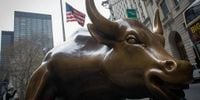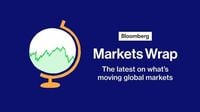On Sunday night, September 21, 2025, global financial markets offered a fascinating blend of optimism, caution, and shifting dynamics, as investors digested a week marked by record highs, central bank maneuvers, and evolving macroeconomic signals. While the U.S. stock futures barely budged following a stellar week, Asian and Australian markets found their own momentum amid central bank actions and commodity surges, painting a complex picture for the week ahead.
In the United States, the mood was one of measured enthusiasm. The Dow Jones Industrial Average and S&P 500 had just capped off the prior week by closing at fresh all-time highs, a feat mirrored by the tech-heavy Nasdaq. Yet, as the new week began, futures for all three indexes slipped modestly—Dow futures fell by 51 points (0.11%), S&P 500 futures dipped 0.13%, and Nasdaq 100 futures edged down 0.15%, according to CNBC and MarketWatch. This mild pullback came after a robust performance: the S&P 500 climbed 1.2%, the Dow added 1%, and the Nasdaq leapt 2.2% for the week ending September 19. The small-cap Russell 2000 also surged 2.2%, marking its seventh consecutive week of gains, as reported by Bloomberg.
But the story wasn’t all about U.S. equities. In Asia, the Nikkei-225 Index in Japan jumped 1.3% on September 21, following reassurances from the Bank of Japan (BOJ) regarding its plans to offload massive exchange-traded fund (ETF) holdings. The BOJ’s earlier comments about ETF sales had rattled markets on Friday, but its subsequent clarification calmed nerves and sparked a rally. The yen, meanwhile, weakened 0.2% against the dollar, providing additional support to Japanese exporters. Shares in Australia and South Korea also rose, reflecting broader regional optimism, according to Bloomberg.
Australia’s ASX 200 futures were up 24 points (+0.27%) as of 8:30 am AEST on September 22, signaling a positive start to the local trading session. This uptick came despite mixed signals globally, underscoring the resilience of the Australian market. The S&P 500, Dow, and Nasdaq’s record closes provided a tailwind, even as the Russell 2000, after a massive advance, slipped slightly prior to September 22, as detailed by Market Index.
Commodities, too, played a starring role in the weekend’s financial narrative. Gold prices rallied 1.1% overnight before September 22, propelling the Gold Miners ETF (GDX) up 5.1% to fresh all-time highs. The surge came after several sessions of pullback, setting the stage for a strong session for gold miners on Monday. Uranium prices were even more dramatic, surging 8.1% overnight and closing at their highest level since October 2012, an event attributed in part to renewed physical uranium trading by Mercuria and significant purchases by SPUT, as reported by Bloomberg.
Meanwhile, the foreign exchange and cryptocurrency markets offered their own twists. The ICE U.S. Dollar Index, which tracks the greenback against a basket of major currencies, was roughly flat on September 21, reflecting a wait-and-see attitude among currency traders. Bitcoin, on the other hand, continued its weekend decline, falling below the $115,000 mark—a reminder that risk sentiment remains fickle in the digital asset space, as noted by MarketWatch.
The Federal Reserve’s recent decision to cut interest rates by a quarter percentage point—the first reduction since December 2024—remained a central theme. The move, widely anticipated, was interpreted by investors as a dovish tilt in response to signs of a slowing labor market. Markets are now pricing in two more quarter-point cuts between now and the end of 2025, according to the CME FedWatch Tool. As Barclays head of European equity strategy Emmanuel Cau put it, "With equities near the highs and rates markets still pricing in [roughly] 5x additional cuts over the next year, further support for equities will hinge more on robust incoming macro data than on more dovishness in rates."
Investors are now laser-focused on upcoming macroeconomic data, particularly the personal consumption expenditures price index—the Fed’s preferred inflation measure—due in the week of September 22. The prevailing expectation is that inflation will remain tame enough for the Fed to maintain its current monetary policy stance. However, as The Wall Street Journal noted, the risk of investors getting ahead of the Fed is rising, especially with cash holdings at a record $7.7 trillion and foreign holdings of U.S. Treasuries at record highs, even as China’s holdings have fallen to their lowest since 2008.
In the tech sector, new policy developments added a layer of uncertainty. U.S. equity-index futures slipped 0.1% as traders weighed the impact of a sharp increase in H-1B skilled worker visa application fees, which jumped to $100,000 starting September 21. The White House clarified that the new fee excludes those with existing valid visas, but the move is expected to have significant ramifications for the tech industry’s ability to attract global talent, according to Axios. Trade talks between the U.S. and South Korea also remained unresolved on key issues such as worker visas, auto tariffs, and investment, reflecting ongoing geopolitical complexities, as reported by Bloomberg.
Elsewhere, the Bank of Japan’s announcement of plans to sell $250 billion in ETFs had initially caused Japanese stocks to decline and the yen to strengthen against the dollar. However, the BOJ’s subsequent efforts to ease market concerns helped the Nikkei rebound, illustrating the delicate balance central banks must strike between policy normalization and market stability.
China’s tech sector, meanwhile, was on the upswing, outpacing even the Nasdaq thanks to ongoing efforts toward AI and chip independence. A call between Xi Jinping and Donald Trump on September 19 touched on issues ranging from TikTok and Nvidia to broader trade negotiations, with Chinese officials reportedly viewing the TikTok discussion as a means to buy more time on higher-priority issues like tariffs, technology, and Taiwan, according to The New York Times.
All told, the global financial landscape as of September 22, 2025, is a tapestry of record highs, cautious optimism, and unresolved questions. Investors are riding a wave of momentum fueled by central bank easing and commodity rallies, but they remain acutely aware that the path forward hinges on the next round of economic data and policy decisions. As markets open for the new week, all eyes will be on inflation readings, central bank signals, and the ever-shifting currents of global trade and technology.
With so many moving parts, one thing is clear: the market’s ability to thrive in ambiguity is being tested yet again, and investors everywhere are bracing for whatever surprises the next trading session might bring.





